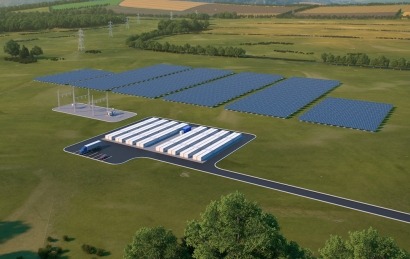
It will be built at a Pacific Gas and Electric Company substation in Mendocino County and provide power to area residents. It is expected to begin operation by the end of 2025 to help support grid reliability and demonstrate solutions needed to meet the state’s climate and clean energy goals.
“A multiday battery system is transformational for California’s energy mix,” CEC Chair David Hochschild said. “This project will enhance our ability to harness excess renewables during nonpeak hours for use during peak demand, especially as we work toward a goal of 100 percent clean electricity.”
The award is one of three approved under the CEC’s Long-Duration Energy Storage program, which is part of Governor Gavin Newsom’s historic multi-billion-dollar commitment to combat climate change. The program invests in demonstration of non-lithium-ion technologies across the state to create a diverse portfolio of energy storage technologies.
As of August, California had 6,600 MW of battery storage in use throughout the state operating at the current industry standard of 4 to 6 hours of discharge. By year-end, the number is projected to increase to 8,600 MW. Longer-duration storage, from 8 to 100 hours, can help the state transition away from fossil fuels and strengthen grid reliability. The state estimates more than 48 gigawatts (GW) of battery storage and 4 GW of long-duration storage will be needed to meet the goal of 100 percent clean electricity by 2045.
Energy storage is key to California’s clean energy future because it provides a way to capture and store excess power generated by renewable resources. The state’s battery fleet is a critical bridge in summer when electricity demand is highest in the early evening hours as solar resources drop off but before wind resources pick up later in the evening.
Iron-air battery technology uses the principle of reversible rusting. The battery cells contain iron and air electrodes and are filled with a water-based, nonflammable electrolyte solution. While discharging, the battery absorbs oxygen from the air and converts iron metal to rust. While charging, the application of an electrical current converts the rust back to iron and the battery emits oxygen. The technology has lower costs compared to lithium-ion battery production.
Other awards approved under the Long-Duration Energy Storage Program include:
The grants are two of the largest the state has ever awarded to benefit California Native American tribe.
CAPTION: The CEC approved funding to build a long-duration energy storage project today similar to the one shown. Source: Form Energy.

